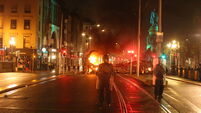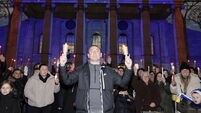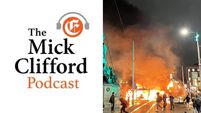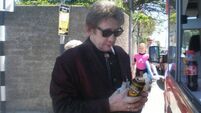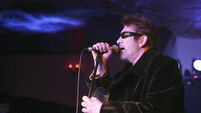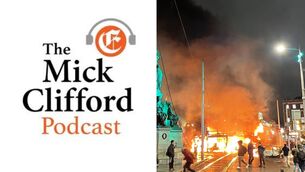Cianan Brennan: Gardaí had plenty of early warning signs ahead of Dublin riots

Gardaí on Dublin's O'Connell St amid violent scenes on Thursday night: Picture: Stephen Collins
The warning signs were there early.
Within minutes of news filtering out of Dublin city centre on Thursday afternoon that a stabbing incident involving children had taken place, the usual channels of the far right on Twitter and messaging app Telegram began to light up.
At first, members wanted to know if the suspect was not of Irish origin. By 2.30pm they had decided that the assailant was indeed a “foreigner”, and the call went out.
The message was clear: All hands were summoned to the scene of the crime to show that "enough is enough".
Recent protests by the far right, notably one close to Leinster House earlier this month, have not been well attended for varying reasons, not least because that particular event was appropriately policed. On that occasion the protesters could not get near the Dáil unless they submitted to a search. Barely any did. The gathering was the dampest of squibs.
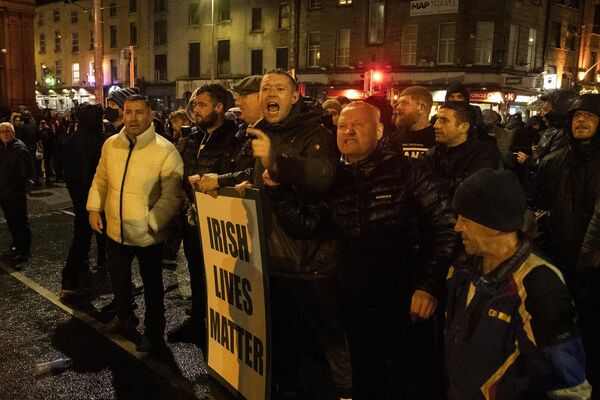
Thursday’s incident felt like a beacon by which a stumbling ‘movement’ could re-energise itself.
The fact that the stabbing of a child is not a story that any group of reasonable humans should seek to weaponise doubtless didn’t occur to those involved.
For those not on Telegram, there was plenty of evidence on Twitter, hiding in plain sight, that there was trouble brewing.
The gardaí were clearly aware there was an issue. In addition to numerous off-the-record reports that their intelligence indicated something was in the offing, not to mention the abuse delivered to gardaí by men arriving on the scene in the wake of the stabbing, Garda Commissioner Drew Harris admitted as much this morning.
The rest of what the Commissioner said has a lot of holes in it, however.
This is a timeline:
- At 1.30pm the incident occurs at Gaelscoil Choláiste Mhuire on Parnell Square East. Three children are wounded by a sole assailant, one girl, aged 5, critically so. Their creche leader is also badly hurt, as is the attacker himself;
- At 2.10pm gardaí inform the public that a serious incident has transpired, and details start to filter out on social media;
- At 2.16pm, far-right agitator Michael O’Keeffe tweets that an incident is developing on Parnell Square.
I was at the scene from 2.20pm. There was a large group present at a police cordon at the Garden of Remembrance, talking among themselves. Barely anyone present had seen the incident first hand.
Within 15 minutes of my arrival a number of men came to the cordon and began to shout abuse at the assembled gardaí, of whom there were about 15.
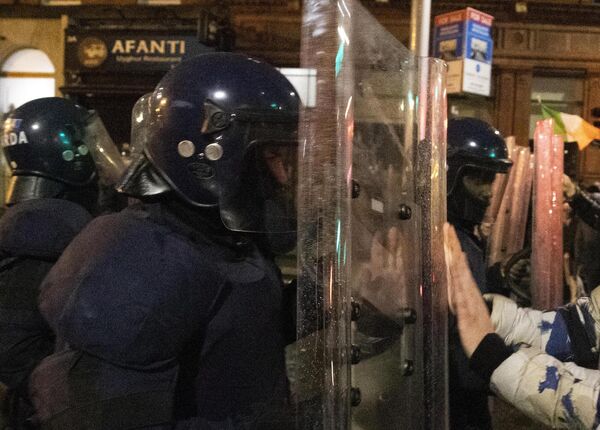
Their abuse, which didn’t have its origins in reality, amounted to allegations that the gardaí had caused the incident by not doing their job properly, by allowing immigrants to wander the land without so much as a by-your-leave.
Some of the gardaí present engaged in very mild terms. There was no positive response.
Given the cacophony which accompanied their arrival, men likely arrived on the back of the rallying call of the far right on social media.
- At 2.50pm O’Keeffe tweets once more, in a post viewed 1.6m times, that “multiple witnesses” have told him that a “foreign man entered the school and stabbed 5 children”, and that “kids are dead”. A wildly inaccurate statement, one no actual journalist could make as the facts simply were not established. The tweet is still up;
- At 2.55pm another agitator, Fergus Power, tweets that “a five year old girl is alleged to have passed away” and that “this better get people off their arses and out on the streets”. That tweet is also still up. O’Keeffe does delete a tweet echoing a call from another far-right agitator, Gavin Pepper, (referred to as a “local election candidate”) for “people to assemble at the Spire at 7pm”. Pepper’s own tweet, also deleted, states: “Everyone city centre tonight 7pm no excuses everyone out enough is enough”, with the hashtag #irelandisfull;
- By 3.30pm the remaining children in the 170-pupil school have left the scene and the situation is relatively calm. However, more protesters are arriving;
- By 4.30pm a crowd of probably 50 people has gathered at the far side of the crime-scene cordon on O’Connell St’s north end. Traffic is blocked, and the Luas is brought to a halt;
- By 5.30pm the crowd has grown to roughly 100 in size, and a number of attempts are made to storm the Garda cordon around the crime scene, where the public order unit is now deployed.
Many hundreds of gardaí were eventually deployed once the riot kicked off in earnest. But at this point, to the untrained eye there are about 12 public order gardaí with shields stationed at the cordon, and perhaps another 10 or 15 officers dressed in ordinary uniform standing at the rear of the scene.
Men, some with their faces covered, wander the area shouting “get them out”.
At 5.55pm, Cork-based far-right activist Derek Blighe posts a video to Telegram stating that “we are at war”.
I was back at the scene on O’Connell St from 6pm. At the time the trouble was confined to the cordon. But onlookers were gathering at the outskirts, and many of them had their faces covered. If there were any gardaí posted to that area at that time, I didn’t see them.
Perhaps some of those onlookers were drawn to any action on the streets by the tweets of Conor McGregor, MMA star and composer of some of the most incendiary social media posts imaginable in recent times, including announcing repeatedly to his 10m followers that Ireland is “at war”. Who we are at war with is unclear.
Regardless, at this stage agitators have been present on the scene for nearly four hours. What happens next does so quite quickly, but it certainly cannot be blamed on the element of surprise.
- At 6.40pm fireworks start, close to the cordon. This proceeds for four or five minutes, and things are getting increasingly febrile on the outskirts. The numbers in attendance are noticeably swelling;
- At 6.45pm a Garda car, which has inexplicably been left parked on Parnell St, around the corner from the cordon, has its windows broken and is set alight with a burning box. Inside six minutes it has been gutted, its petrol tank exploding in the first of many such enormous bangs over the next 90 minutes.
Public order gardaí shout at each other to "hold the line" and one of them tells me in no uncertain terms that “this is your last chance to get out of here safely”.
If reinforcements are arriving, however, it’s not especially evident. The crowd falls back several times following short charges from the gardaí. Then they quickly reassemble. This happens perhaps three times.
Then the crowd, which by now is in the hundreds and is mainly people who have simply gathered to cause trouble, turns its attention to the stationary Luas parked nearby, and two buses parked beside it. And now all bets are off. By 7.30pm the Luas is alight. Half an hour later one of the buses next to the tram has exploded (a truly disturbing sight/sound).
The crowd has had the run of north O’Connell St for 40 minutes while this is going on, without a garda in sight, presumably because they are holding at the cordon. Finally, at roughly 7.40pm, the crowd scatters ahead of advancing riot gardaí, and moves on to spread menace on nearby Henry St and on O’Connell Bridge, where more vehicles are on fire.
It appeared gardaí in authority felt that the 150 or so far-right activists in place at 6pm would dissipate, as they had before. They practised the "don’t make them a martyr" doctrine, not taking into account either the fact it was a dark November night nor the battalion of troublemakers gathering at the edge of proceedings, sensing blood and wondering what they could get away with.
With no gardaí in the crowd, they quickly realised that for a short while they could act with absolute impunity, and as a result carnage, the likes of which Dublin hasn’t seen in nearly 50 years since the 1974 loyalist bombings, ensued. By the time the force got control of the situation once more it was far, far too late.
All of which makes Drew Harris’s assertion on Friday morning that “no one could have anticipated” the violence puzzling in the extreme. To reporters on the scene, it was clear there was major trouble afoot from just after 6pm, and the siren call had been out on social media since 2.30pm. Yet there were hardly any gardaí to be seen. Where were they? They can’t claim to have been taken by surprise; the atmosphere at the scene had been nasty for hours.
The queried both the Department of Justice and An Garda Síochána around the events of Thursday, and the policing response. The department deferred to the gardaí, and the gardaí said they would be making no comment other than their official pronouncements.
Both Mr Harris and Justice Minister Helen McEntee are under pressure over this. Both are facing multiple calls for their resignations. Any repeat of Thursday's scenes could make that pressure unbearable.
